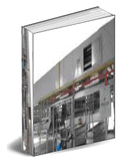JW Latex Consultants (and Rubber Consultants,乳胶顾问) offer solutions to your
problems in Natural Rubber latex and Synthetic Rubber latex processing and the manufacturing of latex products (condoms, catheters, medical gloves, baby teats and soothers, toy balloons etc) Quick answers through e-mails are possible at reasonable cost.
__________________________
This Site Is Best Viewed With Mozilla Firefox Browser. If You Are Viewing With Internet Explorer, It Is Advisable to Switch to Mozilla Firefox By Going to This Link -> http://www.mozilla.org/en-US/firefox/new/
It Is Free to Download
__________________________
Send Your Enquiry and Orders To: woonsungliang@yahoo.com.sg
 Problem Solving Through E-Mails with John Woon Latex Consultants Is Possible
Problem Solving Through E-Mails with John Woon Latex Consultants Is Possible
可以通过电子邮件与JW乳胶顾问来解决问题

__________________________
Please kindly donate to support the maintenance of this site. We'd appreciate it very much.
__________________________
__________________________________________________________________________
Selecting Natural Rubber Latex Compounds for Slingshot Bands
Student: I am a PhD student in organic chemistry. My
hobby is sling shooting, there are many slingshot clubs and tournaments
in Europe.
Over the last years, it has become more and more difficult to
find rubber sheetings that are suitable to craft long lasting slingshot
bands from. I believe that the modern vulcanization packages which are
used to create most latex sheeting offer advantages in the manufacturing
process, but diminish the dynamic properties of the product.
I therefore want to conduct a few experiments in my
laboratory, and ideally come up with a possibility to start small-scale
production of a rubber sheeting that can supply us sling hooters with
good rubber bands - and would be very grateful if you could answer me
two questions:
- Am I right
to assume that rubber with long sulfur crosslink chains has a better
rebound elasticity than rubber types made with strong sulfur donors?
-Does prevulcanisation of the latex affect break elongation and resilience of the final product?
John Woon (Senior Latex Consultant): Generally, polysulphidic crosslinks (i.e. long
sulphur crosslinks) give higher tension set and hence lower elasticity. On the
other hand, with an EV system (Efficient vulcanization) with the use of sulphur
donors, one gets better elasticity. However, EV system gives lower tensile
strength. Hence it is advisable to take the middle road, i.e. Semi-EV system.
Generally PV gives higher elongation
at break and lower resilience compared to a good postvulcanisable latex
compound. However, the actual elasticity properties also depend on the curative recipes used for
making the prevulcanised laetx (PV).



















































.jpg)
.jpg)



.jpg)
.jpg)
.jpg)
.jpg)
.jpg)
.jpg)
.jpg)
.jpg)
.jpg)
.jpg)
.jpg)
.jpg)
.jpg)
.jpg)
.jpg)
.jpg)
.jpg)
.jpg)













































0 Comments:
Post a Comment
<< Home